soufiej
No longer a newbie, moving up!
- Joined
- Jan 3, 2015
- Messages
- 714
- Reaction score
- 113
- Can others edit my Photos
- Photos NOT OK to edit
Others have mentioned mirrorless cameras, as well as other makes such as Pentx, Olympus, Leica and Sony. I felt I should at least stick to Canon and Nikon given that they probably have the widest and most readily available kit. have you any thoughts?
Certainly, that's why I placed those thoughts in my post.
Do not get caught up in the "this, not that" BS. Modern digital cameras are quite capable of producing as good an image as you can accomplish as a student photographer. The base line camera from any modern camera manufacturer will far exceed your capabilities for a long, long time.
The Canon/Nikon issue is truly a non-issue given the amount of processing power found in today's photo software.
You will need software to turn any photo you take into something more than a mere sketch of the moment. Until you process the photo you have nothing more than bits and bytes on a storage card.
The better the camera you use, the more sophisticated your software should be to take advantage of the superior image quality of a DSLR. There are several very good to excellent freeware processors if your budget is tight. Freeware processors will be sufficient to get you through the early stages of learning photography. Unfortunately, you still largely get what you have paid for with software.
The paid for and licensed software processors are more complete and far more capable of literally transforming an image from so so to exceptional; Once you have your camera in hand and you are on your way toward learning how to be a better than average photographer, you will probably want to consider which software to purchase and use. Do not become entangled in a software debate at this point. Buy a camera and begin taking photos. Every day you are not taking photos is another day you have learned nothing about photography.
At the time most people are asking for a camera recommendation, they are only focused on the camera and the purchase of the camera consumes most, if not all, of their available budget. That's a bit like buying a kitchen range and forgetting all the pots and pans needed to cook a meal.
You really must have decent software to process your digital images if you want anything more than to view them on your computer screen. Even if that is the extent of your purposes, software will take your monitor's view and transform it into a totally different thing.
Given this necessary processing outside of the camera, it is really a time waster, IMO, to concern yourself with the more insignificant differences between camera manufacturers when it comes to image quality. Those are age old debates which come from the days of film cameras and today only really apply to a photo taken as a "Jpeg".
Any modern DSLR (and many of the less expensive "compact" cameras) offer the shooter the choice of storing their image data as either a Jpeg or in "RAW capture". Very briefly, since this is not relevant to your actual purchase of a camera, a RAW image is seen as the digital equivalent to a film negative. It is a larger data file which does two things at its base.
1) It offers the photographer the greatest amount of image data available for processing therefore making processing and editing a more flexible option. As the digital equivalent to a film negative, it must be further processed outside of the camera to see the full image quality of the photo. You would never use a RAW image to send as a photo over your smart phone.
2) It takes up more file space on your storage card due to the greater amounts of data contained in the image file.
A Jpeg is a smaller file which takes up less space in storage. There are even size selections the photographer can select - much like the available options for file size in an MP3 audio file - which will compress data into smaller and smaller packages. If your intention is simply, say, to attach an image file to a text message, then using the smallest file size will provide the best and fastest function. It will not provide the best image quality since the reduction in file size is accomplished by compressing the data, which means you are discarding data to achieve a compact package.
Shooting in Jpeg is fine for social media purposes but not for serious photography. For that you want to use RAW capture. Any modern DSLR provides a RAW capture option. Any one, so this is not an issue of which to buy. It simply exists in any camera you would select.
For the most part, debates regarding Canon vs Nikon or Sony or Pentax are centered around how each manufacturer deals with creating their Jpeg images. How colors are arranged and how details of the photo/image file are saved and discarded resulting in a characteristic look to each manufacturer's Jpeg result. (Obviously, there is more to this than compression of a simple data file but this is where most of the discussion still centers.)
Once you learn the in's and out's of the processing software you will be using RAW data files. Therefore, what any manufacturer provides as a Jpeg "look" is rendered all but meaningless. Since you determine the final look of your photo through software processing, I would say it would be all but impossible for even the fairly knowledgeable photographer to determine whether any single photograph had been taken with a Canon or a Nikon or a Sony, etc.
Therefore, I wouldn't get myself hung up on such ideas as "this, not that". Buy the camera that has the ability to work with you, which is normally in the feel of the camera in your hands and the accessibility to menus. Any digital camera lives and dies by way of its menus. If they are difficult to access or they are confusing to the student photographer, your results can and probably will reflect the fact the camera is still controlling you.
As I said, I feel a touch screen as found on the Canon Sl1 is ideal for the student photographer as it lays out on your LCD viewing screen the functions which will affect your photographic image quality. No hunting through menus or searching for features. They are there in front of you and they can be changed by simply touching the screen.
On the other hand, say you select the Nikon D3300 which lacks a touch screen. Every function represented by the SL1's touch screen is accessible through a menu system. You simply need to learn how Nikon has laid out is control button technology to access its menus and where in the menu you need to go to access a feature or change a function. They too will then pop up on your LCD viewfinder screen.
IMO this small feature makes a far larger difference for the average, and certainly for the student, photographer than will the age old Canon vs Nikon debate. Consider you will not be using Jpeg storage for your more serious photography and you should see the differences are so minimized that debating which manufacturer's product to select based on this, not that is merely debating how many angels can dance on the head of a pin.
Either Canon or Nikon offer excellent image quality from their baseline entry level camera. They also offer the widest selection of lenses and accessories plus the advantage of tutorials geared to your specific camera. I personally wouldn't get sucked into this camera has this and that camera does that. Whatever you select at any price range up or down the line will have trade offs and you can't afford to buy every camera so as not to encounter a trade off.
Whatever you buy from either company will far exceed your ability as a student photographer to create interesting photographs. You just need to begin shooting photographs.
You needn't debate any more. Really, you will only get yourself to a point of paralysis by questioning the small bits that are far less valuable to the process than will be you simply having a camera in your hands and learning photography by taking photographs.
In closing, in case you didn't bother to look at the links provided, I'll close this with a quote from the Rockwell article ...
"What camera do I suggest for my friends and family when they ask? What's the best camera that can handle every kind of photo situation, but still lightweight and at a reasonable price?
The Nikon D3300.
You can pay a lot more, but no camera does anything significantly better than the D3300 for most people's photography ...
Better pictures come from knowing how to take better pictures, not from a better camera ...
If you already have a preference for Canon, the Canon SL1 is even a little bit smaller and equally excellent. The differences between the SL1 and D3300 are a matter of which fits your hands better or which has controls or menus that you personally might find more convenient. I prefer the D3300, but if you're already shooting Canon, the SL1 is just as fantastic."
Buy a camera and begin taking photos. Until you do that simple step, you are not learning anything more about photography.
Last edited:




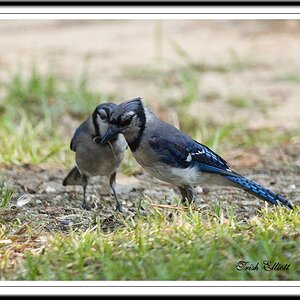


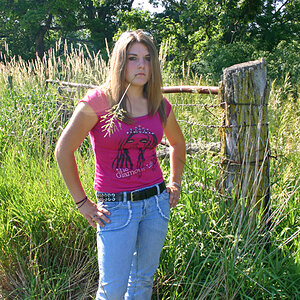
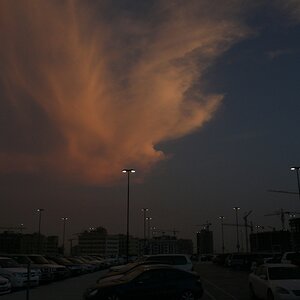

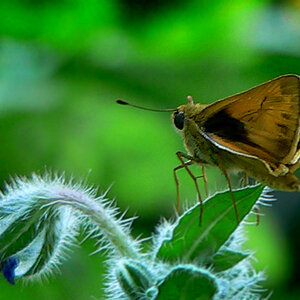
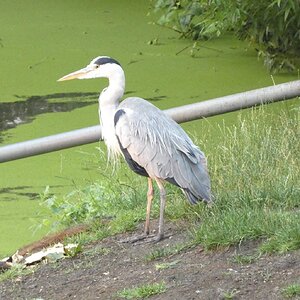
![[No title]](/data/xfmg/thumbnail/33/33030-2d80455c47ebf5f145e0bd5064267aea.jpg?1619735844)
